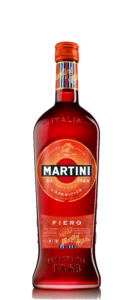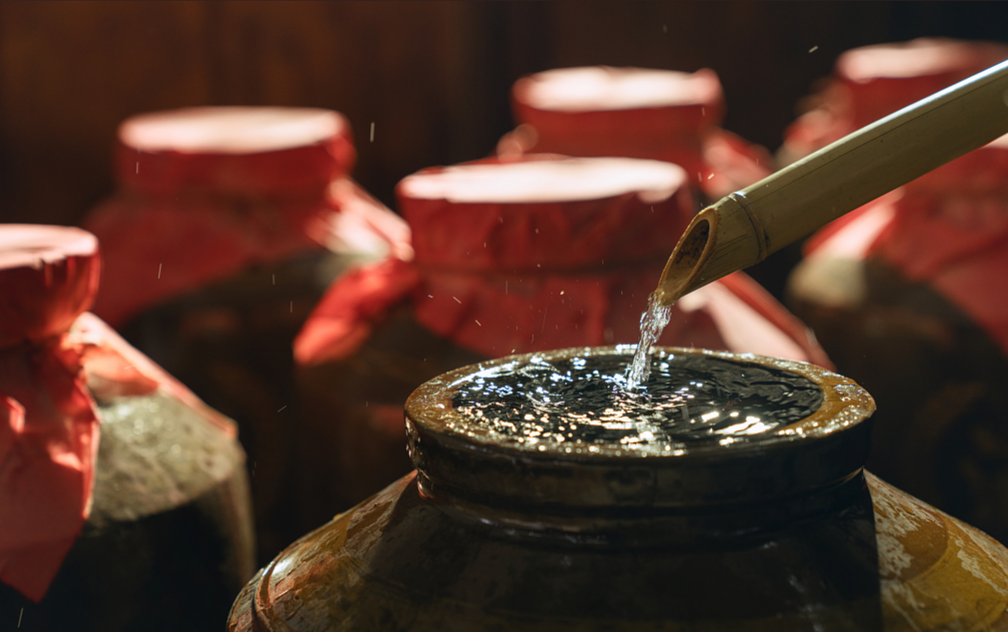The history of vermouth

2,400 years ago, sweet wine with wormwood and oregano was already being mentioned in Europe. It was considered as medication, but it can be called the ancestor of modern vermouth.
The first commercial Italian version was created by Antonio Benedetto Carpano in 1786. He used quality ingredients, added a spirit to the herbal wine, and called it ‘Wermut’, the commonly used German name for wormwood. With French being the main language in the area (Savoy), the name subsequently became vermouth. The medicinal drink morphed into an apéritif at the end of the 18th century, which then became an ideal ingredient for bartenders at the end of the 19th century. Cocktails like the Manhattan and Martini became very popular worldwide, and still are to this day.
In the 1950s, vermouth’s popularity waned in the English-speaking world, but Italian immigrants stayed loyal to their drink. In southern European countries like Spain, France and Italy, it also continued to have a following and was mostly enjoyed as an apéritif. The cocktail bar boom of the current century has led to revitalised growth for vermouth brands.
Production
Most vermouth these days is made from white wine, resulting in a pale, bitter and dry drink. There is also a red version, which tends to be more on the sweet side. The colour rarely comes from the use of red wine, but from adding caramel or botanicals. To create a vermouth, the base ingredient is a traditional wine. It can be aged in barrels, and the spirit is only added once the production process for the base wine has finished. As per Italian law, at least 75% of the vermouth must be wine, with overall ABV not exceeding 22%.
The plants, herbs and spices that can be used by producers cover an infinite variety. The ones most commonly used in vermouth are angelica, cardamom, coriander, oregano, gentian, ginger, hops, orange or grapefruit peel, liquorice, marjoram, rose, saffron, star anise, vanilla and thyme. Then there is of course the mandatory Artemisia absinthium.
As per Italian law, at least 75% of the vermouth must be wine, with overall ABV not exceeding 22%. Among the numerous plants, herbs and spices that can be used, Artemisia absinthium is mandatory.
These flavourful ingredients are mostly incorporated into the spirit because the high alcohol content makes it easier to extract the requisite flavours. These can be obtained through maceration (welling), and also by distillation. The herbs are then mostly hung in the neck of the kettle, giving the rising steam an opportunity to carry the desired flavours further up. Sometimes the herbs and plants are added at the end to the fortified wine. Each technique obviously results in a different end product. 2017 saw the emergence of an appellation of origin – Vermouth di Torino – established to protect the region’s vermouth producers. The rules stipulate that the vermouth must be made using white wine from Piedmont.
Sweetness
The sweetness of the vermouth is obtained by adding sugar (for the lower qualities) or alcohol to the fermenting wine. This technique kills the yeast, leaving behind the natural sweetness of the grapes. The alcohol can be made from sugar beet, but the better qualities of vermouth add grape-based alcohol. Well-known Mediterranean grape varieties like Trebbiano and Picpoul are often used, but the lesser known Bianchetta, Catarratto, Clairette blanche and Trevigiana are also popular. The wine from these grapes stays light and low in alcohol. According to European law, after distillation the wine’s ABV will rise to between 15 and 22 %.
The sweetness of vermouth can be classified in the following way:
Extra-Dry: less than 30 g sugar per litre
Dry: less than 50 g sugar per litre, min 16% alcohol
Semi-Dry: 50 to 90 g sugar per litre
Semi-Sweet: 90 to 130 g sugar per litre
Sweet: 130 g or more sugar per litre
A bottle of vermouth can be kept longer once opened than a bottle of wine, due to the sweetness and slightly higher level of alcohol. However, the alcohol content only prolongs its lifespan once open for a few weeks, and ultimately does not protect it from oxidation. It is therefore recommended to consume vermouth within six weeks of opening and to keep it in the fridge.
Brands
Vermouth is now made around the world, but ahead of our Italian trip, we will mention a few brands from Italy. Vermouth can be drunk neat, but is mostly used in cocktails.
 |
Martini & RossiProbably the best known vermouth in the world, created by Alessandro Martini and Luigi Rossi in 1863 in Asti, Piedmont. From then through to now, there have only been 8 master blenders who know its recipe. They produce sweet, dry and white versions, but also ‘Fiero’, a dry white wine infused with sweet and bitter orange. |
 |
Mancino VermouthA new brand released in 2011 which is popular with bartenders mainly because it was created by one – Giancarlo Mancini. The basic variations are Secco, Dry, Bianco Ambrato, Rosso Amaranto, but there is also Mancino’s Vecchio. That is the aged version of the Rosso Amaranto, which is matured in Italian white oak barrels for an entire year. |
 |
Punt e MesThis brand was established in 1786, when the afore-mentioned Antonio Benedetto Carpano created his sweet vermouth. It was not until 1870 that this iteration was created, and now it is the brand’s most popular label. The phrase ‘Punt e Mes’ is a local expression, referring to adding half a measure of bitter to the sweet vermouth. |
 |
CocchiCreated by Giulio Cocchi in 1891, this brand claims to be the reason why the Piedmont region of Italy is known as the “Kingdom of Vermouth.” The company produces white, rosé and red versions, but also Cocchi Tipo Esportazione. This vermouth is made from a three-year-barrel-aged Barolo, making it by the far the most expensive of this collection. The main extracts are quinine and cassia, but the vermouth has more than 20 ingredients. It is sweetened, making it a sipping post-prandial style drink.
|
 |
Carpano Antica FormulaPopular with bartenders, this was also created by Antonio Benedetto Carpano in 1786. Now crafted by the Fratelli Branca Distillery, the low alcohol wine for this vermouth comes from Puglia, Sicily and Romagna. |
2022 award-winners
We will end with three Vermouth award-winners from last year’s competition in Guadeloupe. They may be less well-known to a wider audience, but their quality speaks for itself, hence their accolades at the competition. Each product also features some of the judges’ comments.
 |
 |
OLD – Vermouth di TorinoA rusty-red-looking mix of bitter orange together with some grapefruit followed by red, ripe fruit and then powerful bitter. The complexity of this vermouth is perfect, making it the best all-rounder for everyday drinking or even complex cocktail usage. |
 |
 |
Vermouth Classico Del Professore 2021This bright sunflower-yellow is complex and pleasant with lots of fresh zesty fruit notes. The cinchona bark and angelica have a rooty note, with a lot of power and complexity. It is ideally balanced between acidity and sweetness, while the wine underneath is still recognisable. |
 |
 |
Civico 10 Vermouth di Torino Rosso SuperioreA clear vermouth with beautiful wormwood and some peppery notes. There are a lot of red fruit aromas, all carried by a beautiful wine taste with well-integrated alcohol. This is an expressive product that shows structure and balanced complexity. A great lingering representative of the category! René Van Hoven |


